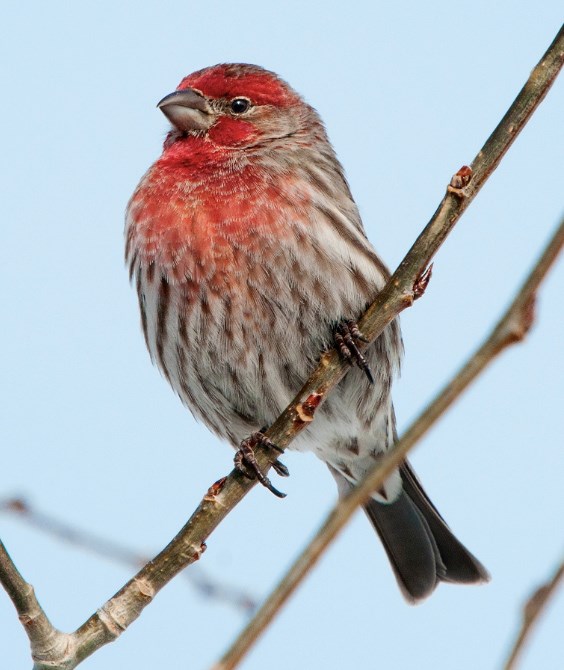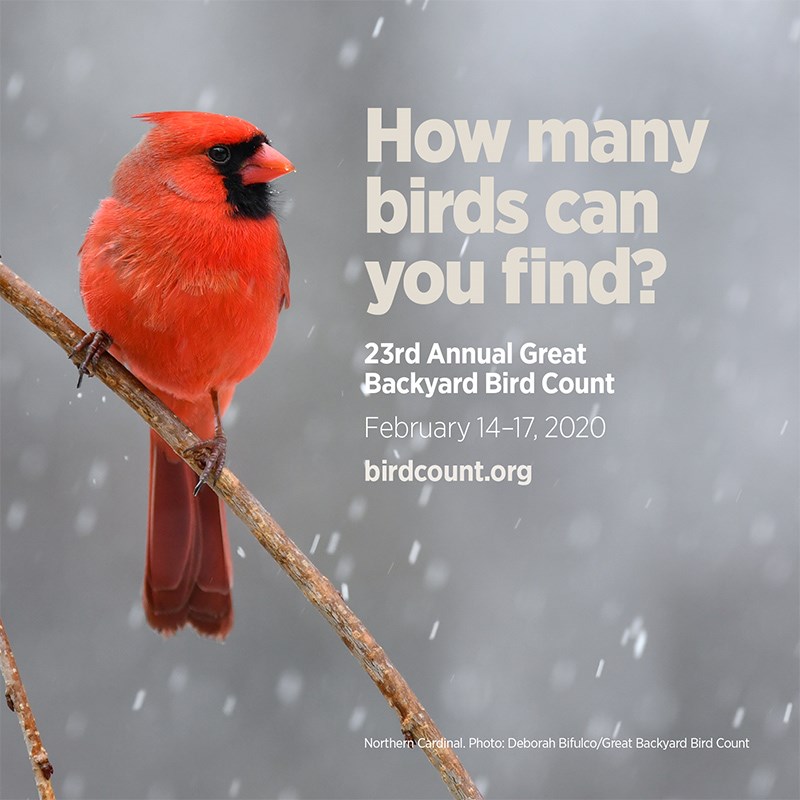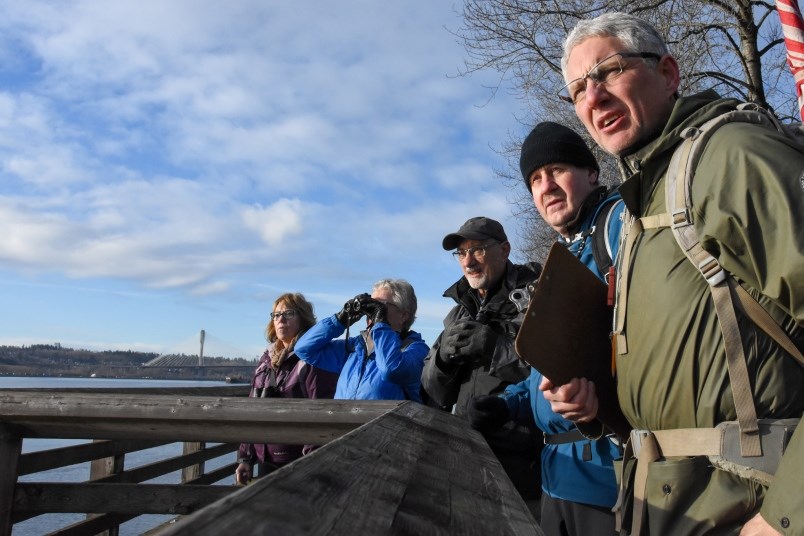Love birds?
Just in time for the Valentine’s Day weekend, Audubon is hosting its 23rd Great Backyard Bird Count.
Starting today, Friday, Feb. 14 and running through Monday, Feb.17, this count is a beginner-friendly event — even easier to join than the Christmas Bird Count — and everyone in the Tri-Cities, Anmore and Belcarra can join in.
“It’s a great event,,” says David Bradley, director for Birds Canada in B.C. “It gets people outside, it generates interest as people get ready for migration this spring.”
With the addition of a handy free app, called eBird, or by logging in to a special link, backyard scientists can contribute to a North America-wide study of bird populations.
And not only do you not need any experience, you don’t even need a backyard.

Just find a place where you’re likely to see some birds, Bradley said, noting this is a great time to visit a local park or wildlife refuge.
To participate, count birds for at least 15 minutes in as many places and on as many days as you like.
While there may be count duplication in popular bird-watching spots such as Lafarge Lake, it’s not a concern because of some data points included in the information, including time stamps, and if a rare bird is sighted more than once at the same spot, that information can be factored in, Bradley said.
“The best thing is to go somewhere someone isn’t counting, but really the important is thing to get people outside,” Bradley told The Tri-City News.
—
Read more Tri-City bird stories
If you like reading about local wildlife, check out these stories.
Birdcount tracker on the road to extinction or rebirth
These folks enjoy the gift of birds during the Christmas Bird Count
—
As many as 3,000 people are expected to participate in this weekend's count in B.C., with numbers growing each year.
Bradley said helping with data collection provides people with the feeling they are doing something to help the environment, an important consideration during times of anxiety about climate change.
“It’s hard to feel like you’re making a difference,” Bradley said, “but this is a great way to get people to contribute.”
There are other ways to to help birds, too, said Bradley, and Birds Canada has a list of six things you can do on its website.

HERE’S HOW TO TAKE PART
• Create a free GBBC account if you have never participated in the Great Backyard Bird Count or have not participated since 2013. If you already created an account for the GBBC in the past or if you’re already registered with eBird or another Cornell Lab citizen-science project, you can use your existing user name and password.
• Count birds for at least 15 minutes on one or more days of the GBBC. You can count for longer than that if you wish. Count birds in as many places and on as many days as you like — one, two days or all four days. Submit a separate checklist for each new day, for each new location or for the same location if you counted at a different time of day. Estimate the number of individuals of each species you saw during your count period.
• Enter your results on the GBBC website by clicking the Submit Observations tab on the home page. You may also download the free eBird Mobile app to enter data on a mobile device. If you already participate in the eBird citizen-science project, please use eBird to submit your sightings during the GBBC. Your checklists will count toward the GBBC.
The count is conducted in Canada and the U.S. in February to create a snapshot of the distribution of birds just before spring migrations ramp up in March.
Scientists at the Cornell Lab of Ornithology, National Audubon Society, Bird Studies Canada, and elsewhere can combine this information with data from surveys conducted at different times of the year.



